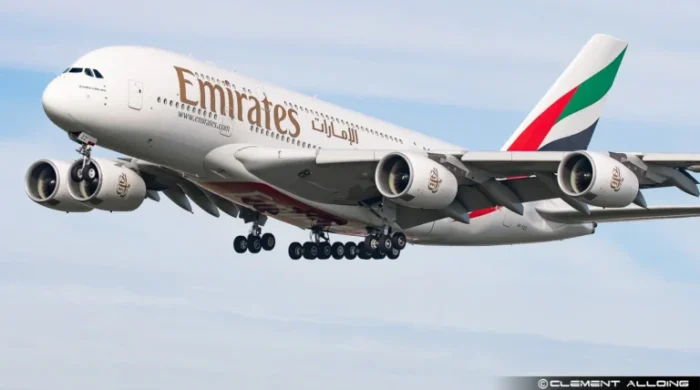From Mallorca to Bhutan: Making tourism sustainable
- আপডেট সময় শুক্রবার, ২০ অক্টোবর, ২০২৩

From Thailand to Mallorca, local ecosystems have suffered under the weight of mass tourism. Can visitor number limits and sustainable practices help restore the balance?
As airlines and hotels out-compete each other on price, post-pandemic tourist numbers are breaking records, with one million people arriving in Greece per week in the summer of 2022 — despite high inflation and an energy crises driven by the war on Ukraine, and intense wildfires linked to climate change.
The ecological and climate impact of this overtourism is forcing the industry to act, and to follow in the footsteps of some sustainable tourism pioneers.
Maya Bay, an idyllic beach on an uninhabited island in Thailand’s Phi Phi archipelago, become globally famous when it was the location for “The Beach,” the 2000 film starring Leonardo DiCaprio.
Flanked by vast limestone cliffs, the secluded cove with its white sand and turquoise water became jammed with flotillas of boats and cruisers as thousands of tourists flocked to the beach daily for nearly two decades.
Tourist traffic led to pollution from discarded trash and damaged coastal vegetation, but the main problem was the boats dropping their anchors onto the coral below.

When “The Beach” was sealed off to the public in 2018, there was only 8% of the coral coverage in the bay, compared to up to 70% some 30 years before.
A restoration team set about replanting the destroyed coral to rehabilitate the reef in five to 10 years. Boats have to dock at a new pier rather than come ashore on the beach, swimming is forbidden, and new boardwalks keep visitors from trampling the delicate coastal ecostyem.
When Maya Bay finally reopened in early 2022, visitor numbers were cut from the previous height of around 7000 to around 400 per day, noted Thon Thamrongnawasawat, head of the restoration team, in an interview with China’s State news agency, Xinhua.
“It is one of the most successful marine actions in many years not only for Thailand but for the whole world,” he said.
Bhutan adapts to climate change via tourism fee
The tiny Himalayan kingdom of Bhutan, known for its philosophy of promoting “gross national happiness,” introduced a Sustainable Development Fee (SDF) of $65 (€61) around three decades ago to limit mass tourism in the mountainous nation.
Under the mantra of “high-value, low-volume” tourism, the tax revenue has been invested into conservation and sustainability through planting trees, clean and maintain trails and to electrify transport. The fee has helped Bhutan become South Asia’s only carbon-negative country as its protected forests continue to store more carbon than the country emits.
The money also addresses high vulnerability to climate change, with impacts ranging from severe drought to melting glaciers.

In 2022, the Bhutan government raised the daily fee to $200 dollars per person when it reopened following the pandemic, saying the cash would be used to offset tourism emissions.
But the fee hike hit tourist numbers and resulted in losses across the sector. In August, Bhutan halved the amount to US$100 to stimulate tourism as it strikes a balance between climate protection and the local economy.
Costa Rica fights deforestation with ecotourism
In 1997, Costa Rica implemented a Certification for Sustainable Tourism that became a pioneering blueprint for a climate- and environment-friendly travel industry.
The reform was in line with an attempt to reverse decades of deforestation, with around half the forest that once covered 75% of Costa Rica lost between the 1940s and 1980s.
Small ecotourism entrepreneurs soon created low impact resorts and ecolodges aimed at more affluent travellers wanting to explore the country’s rich biodiversity and natural beauty.

Sustainable tourism is integral to the fact that over half the nation is again covered in forest. Meanwhile, more than 98% of the Latin American nation’s energy comes from renewable sources.
As part of its strict ecotourism certification, Costa Rica has continued to prove the fact that some visitors will pay more for a genuine sustainable travel experience.
Mallorca: Can sustainability tax offset overtourism?
During peak tourist season, an airplane lands or takes off in the Balaeric Sea island of Mallorca every 90 seconds.
“There are few places in the world that contribute as much to global warming as Mallorca,” Jaume Adrover, a spokesperson for the Mallorca-based environmental group Terraferida, told DW in 2022 of the tourist mecca. “And this is due to only one activity: tourism.”
During its 2019 peak, 12 million visitors descended on an island whose population is a little over 900,000 people. The sheer weight of numbers has forced the government to limit the ecological and climate impact of the industry.
A new 2022 tourism law addresses issues of energy efficiency and CO2 reduction in the hotels sector. Hotels need to eliminate fuel oil or diesel boilers to reduce CO2 emissions, and also install water-saving devices while banning single-use plastics. A moratorium on any new tourist accommodation until 2026 aims to reduce the explosion in tourism numbers.
This follows the introduction in 2016 of a daily eco tourism tax, currently as high as €4 euros per day, that is being reinvested in sustainability, including the restoration of Posidonia seagrass meadows.
Dubbed the “lungs of the Mediterranean,” the seagrass produces oxygen, absorbs carbon, provides habitat and shelter for a variety of species, yet has receded around Mallorca due to pollution, and like in Maya Bay, boat anchors.
But without significantly reducing the number of tourists, and therefore flights, local ecologists like Jaume Adrover still fear that not enough is being done to transform the tourist hotspot into a model of sustainability.

















